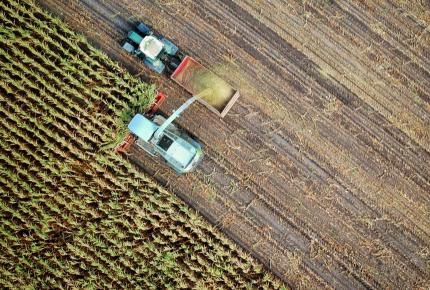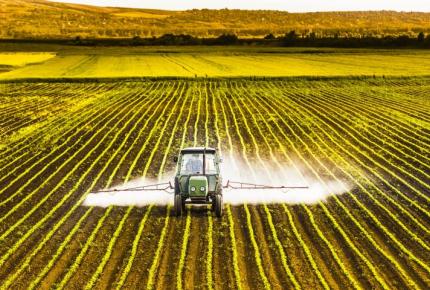Society
4 ways to make food processing more sustainable
Jun. 23 2020
To meet the nutritional needs of a global population set to reach 9.1 million by 2050, food production will need to increase by at least 70%.[1] The natural resources required to do this, however, are finite and under increasing pressure.
Players across the food industry are stepping up to the challenge, finding innovative ways to minimize food production’s environmental impact and support the planet’s capacity to continue producing food far into the future.
Sustainable food production doesn’t end with primary production (i.e. agriculture). Food industry stakeholders are increasingly turning their attention to the impacts of food processing and manufacturing. Encouraging sustainable food processing and manufacturing is one of the primary objectives of the EU’s new Farm to Fork strategy, a hallmark initiative of the new European Green Deal.
Here are four ways food processors and manufacturers can reduce their environmental footprint.
1. USE ECO-FRIENDLY PACKAGING
Food packaging is a major source of waste and pollution. Over 78 million metric tons of plastic packaging is produced each year – only 14% of which is recycled. [2] The vast majority of plastic is made using non-renewable sources – either oil or natural gas – and will ultimately end up in a landfill.
A growing number of manufacturers are opting for wood- and paper-based alternatives. Wood and paper have the advantage of being biodegradable, renewable and easily recyclable. It is critical, however, that the paper and wood used to make the packaging come from sustainably managed forests. Other manufacturers are developing innovative alternative packaging from biodegradable materials including seaweed, crops and even fish skin. Some of these new alternatives have the potential to replace single-use plastics.
When it comes to metal food packaging, sustainably sourced aluminum is one of the most environmentally responsible choices. Aluminum is one of the most easily and widely recycled metals – the recycling process requires only 5% of the energy it takes to refine new aluminum.[3]
2. REDUCE FOOD WASTE
According to the Food and Agriculture Organization of the United Nations (FAO), nearly a third of food produced for human consumption gets wasted each year.[4] This amounts to 1.3 billion tons of food waste annually. This is not only a major loss of food in itself but also of the resources used to produce it (i.e. water, soil nutrients, transportation energy, labor). While around a third of this food is wasted during the farming and post-harvest handling, and another fifth by end-consumers, almost half of all food waste stems from processing and manufacturing.[5]
One of the main causes of food waste during processing and manufacturing is inefficiency.[6] Food manufacturers and processors can significantly reduce food waste by optimizing their processes and management systems. This starts with carefully measuring food losses and identifying their causes. It also means ensuring that personnel are properly trained.
The EU has committed to halving food waste by 2030: using a new methodology for measuring food waste and data from member states, it plans to set legally binding targets to reduce waste across the bloc.
3. IMPROVE ENERGY & WATER EFFICIENCY
Food processing and manufacturing are both energy- and water-intensive. Processing and manufacturing are responsible for about 23% of the food industry’s overall energy expenditure in the United States.[7] Water is used extensively in food processing, both as an ingredient, and in various industrial processes (e.g. cleaning, sanitizing, cooling, cooking).
Reducing energy and water consumption can be particularly challenging in the food processing and manufacturing sector – production demands and safety requirements must come first. However, significant improvements can nonetheless be made by finding opportunities for greater efficiency. The deployment of smart meters and the implementation of energy efficiency and sustainable water management systems, for instance, can help identify and act on these opportunities.
4. USE SUSTAINABLE INGREDIENTS
There are a number of agricultural commodities in particular whose production raises environmental and social sustainability concerns. The farming of “dirty” palm oil, cocoa and coffee, for instance, has been linked to deforestation, habitat destruction and child & forced labor, among other sustainability issues.
Fish products are another area of concern – nearly 90% of the world’s fisheries are either fully exploited, overexploited or depleted.[8] Overfishing and destructive fishing methods are threatening fish populations around the world, damaging fragile marine habitats and ecosystems, and jeopardizing the livelihoods of the local communities that rely on these fish stocks.
Food processors and manufacturers can take a stand against these and other harmful agricultural practices by ensuring that they source “high-risk” ingredients responsibly. Programs like the Roundtable on Sustainable Palm Oil (RSPO), Round Table on Responsible Soy (RTRS) and UTZ / Rainforest Alliance (for coffee, cocoa, tea and hazelnuts) set stringent standards to assure that specific crops are produced without undue harm to the environment or to local communities. Marine Stewardship Council (MSC) sets standards to help maintain healthy fish stocks and protect marine life.
ACHIEVING SUSTAINABILITY THROUGH AUDITING, CERTIFICATION AND TRAINING
Through its Circular+ program, Bureau Veritas provides a comprehensive range of auditing, certification and training services that enable food processors and manufacturers to reduce their environmental and social impacts.
Learn more about Bureau Veritas’ certification and training services for the food industry.
[1] https://www.eufic.org/en/food-production/article/food-production-3-3-a-sustainable-food-supply
[3] https://www.e3s-conferences.org/articles/e3sconf/pdf/2019/56/e3sconf_ic-amme2018_01033.pdf
[4] https://www.fao.org/3/a-i2697e.pdf
[5] https://www.bcg.com/publications/2018/tackling-1.6-billion-ton-food-loss-and-waste-crisis.aspx
[6] The World Resources Institute, “Reducing Food Loss and Waste,” https://citeseerx.ist.psu.edu/viewdoc/download?doi=10.1.1.360.951&rep=rep1&type=pdf.
[7] Source: University of Michigan, Center for Sustainable Systems (https://www.umich.edu/~css)
[8] https://unctad.org/en/pages/newsdetails.aspx?OriginalVersionID=1812

